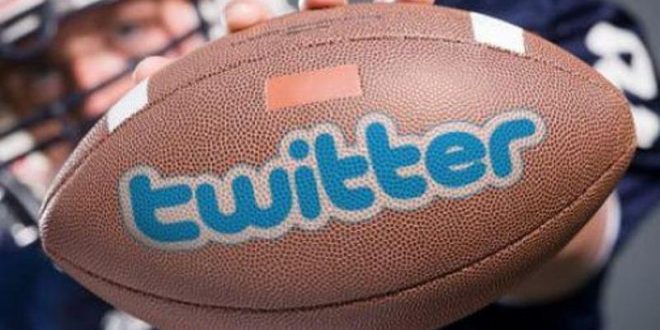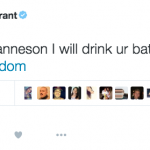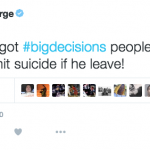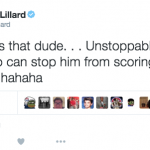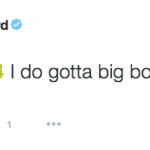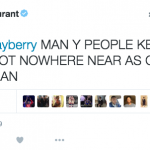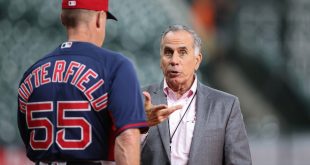Twitter, Facebook and Instagram: Everyone has at least one of them and, if you’re a sports fan, you’re using these platforms to digest your favorite athletic activities.
Social Media Today
Social media and sports are inseparable. Reporters use social media to break news and push out new content. Fans will use it to watch highlights and follow their favorite sports-related accounts. Players will use it to interact with fans and improve their brand.
Some recent examples:
Patriots are placing TE Rob Gronkowski on IR, per @FieldYates. He is officially done for season.
— Adam Schefter (@AdamSchefter) December 3, 2016
https://twitter.com/KingJames/status/804818624984870912
https://twitter.com/seancliff13/status/805152847302197249
When Did This Happen
An 2010 Business Insider article made the definitive announcement — almost all news are broken exclusively through announcements on social media. All content put on some sites usually makes its way onto others in the forms of videos, articles, reactions, and even memes. If it’s on the internet, it’s on social media, and if it’s on one site, it has been mentioned on all the others as well.
Another way to see this growth is in this study, which shows the growth of twitter followers on social media of major league baseball teams since 2011 (measured in thousands of followers). As social media has grown, so has its influence and reach in the realm of sports.
Social Media and the Viewer
Another impact social media has had on sports as we know them is the manner in which sports are viewed. Thanks to social media, fans can now experience games together by live-tweeting the game or by posting about it on Facebook, rather than by physically watching the games together. Ted Spiker, head of the journalism department at the University of Florida, can’t imagine viewing sports without Twitter. Twitter usage shows big sporting events, typically football games, generate tweets in the millions.
This year, Twitter acquired the viewing rights to Thursday Night Football, an unprecedented move. Traditionally, football games have never been available online without a cable subscription. Twitter received over 2 million viewers on average on their first two broadcasts. During these broadcasts, there is a live stream of tweets accompanying the football game.
Social Media and the Journalist
Social Media has affected the way sports is covered in traditional media as well. Whether it’s Adam Schefter or Adrian Wojnarowski breaking the latest news on players or Bill Simmons making pop culture references and loving the Boston Celtics, social media has provided an outlet for sports journalists of every kind.
Long gone are the days of waiting to catch the recap of yesterday’s games in the following day’s newspaper. The days of having to catch all of the highlights on SportsCenter are also ending. Now, players can even break news through their own platforms, such as the Players’ Tribune.
Does this mean that sports news may stop coming through media intermediaries ? Anyone can tweet about an event and share what they see or hear, so what makes a sports journalist special? Spiker said that the access that journalists get sets them apart from the average fan tweeting about the game.
Social Media and the Athlete
Social media and athletes creates an interesting issue. On one hand, it can be a very useful tool for athletes to improve their brand and connect with their fans. On the other, it also gives them a public platform where they could potentially harm their image. While the majority of instances are the former, the latter provides some of the most prominent stories in sports.
Spiker recants the situation with Olympic track athlete Lolo Jones. Jones was known for her humorous persona on Twitter, but she ran into some issues during the 2012 Olympics. Jones drew heat for her comments about the U.S. archery team getting the silver, following the shooting in Aurora, Colorado. This wasn’t Jones only run-in with issues on social media; she once again drew controversy when she called out paralyzed college athlete Eric Legrand.
Twitter, however, wasn’t always like this. Before 2012, Twitter was the wild west, where many athletes could say what they wanted and receive little-to-no attention or backlash. Take these (WARNING: graphic language used in tweets) tweets from NBA players before they were famous. The latest date in these tweets is in 2011 and, as you can clearly see, there is some offensive stuff being said. A few years ago, Lakers forward Larry Nance Jr. was under fire for a 2012 tweet where he referred to then teammate Kobe Bryant as a rapist.
Some examples of NBA Player tweets
Outlook Moving Forward
Sports fans are obsessive and passionate people, full of vitriol and vigor. They love sports and will do whatever they can to be close to them. They dress up, get into fights and have even started wars over the sports they love.
Fans will do whatever it takes to access content related to their sports. More likely than not, sports have drawn users to social media that normally wouldn’t be involved with these platforms in the first place.
Because of social media, sports has changed forever– not just for the fans, but also for the players and people whose careers directly involve it. Whether we like it or not, social media in the realm of sports is here to stay and, most likely, will become even more integrated than it is now.
My full, unedited interview with Ted Spiker:
 ESPN 98.1 FM / 850 AM WRUF ESPN 98.1 FM / 850 AM WRUF
ESPN 98.1 FM / 850 AM WRUF ESPN 98.1 FM / 850 AM WRUF
